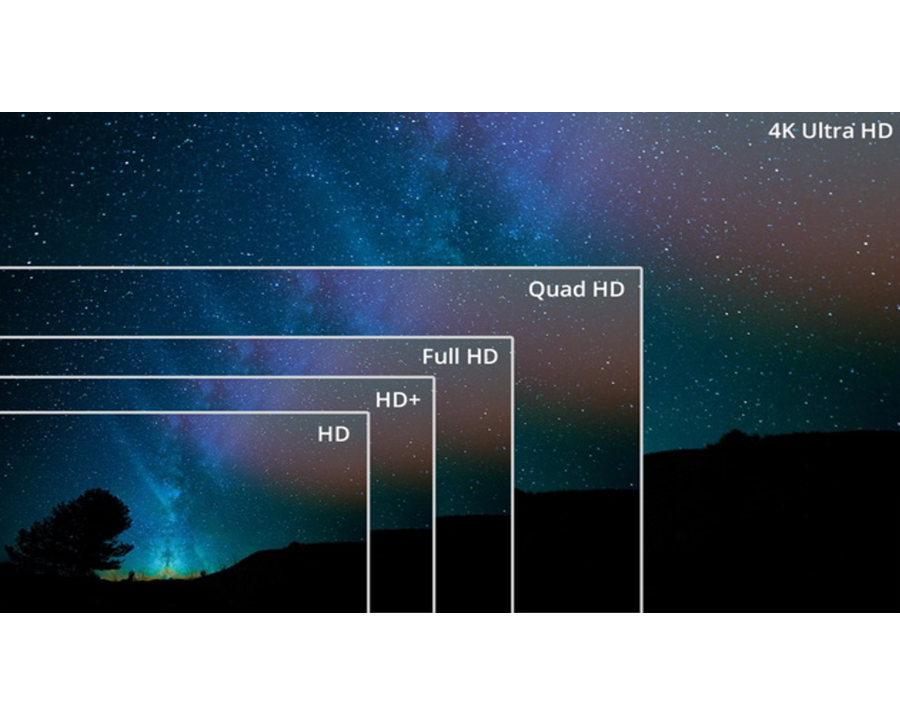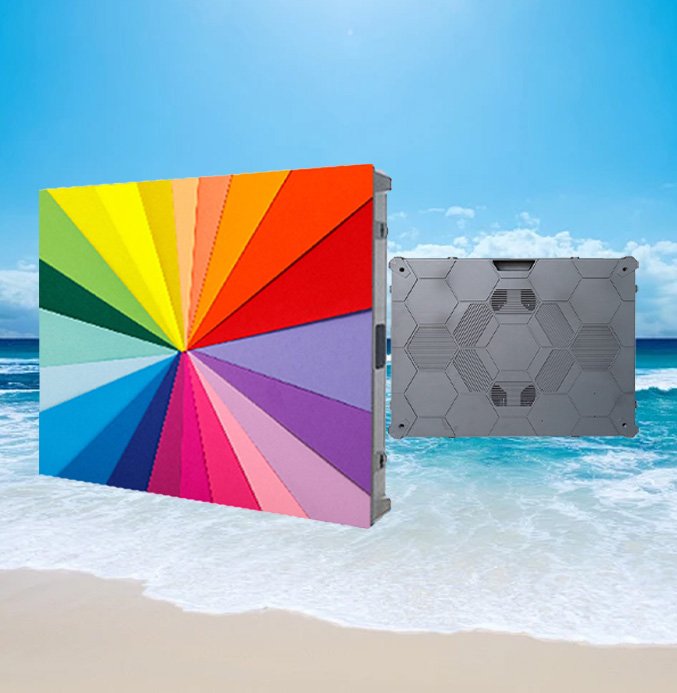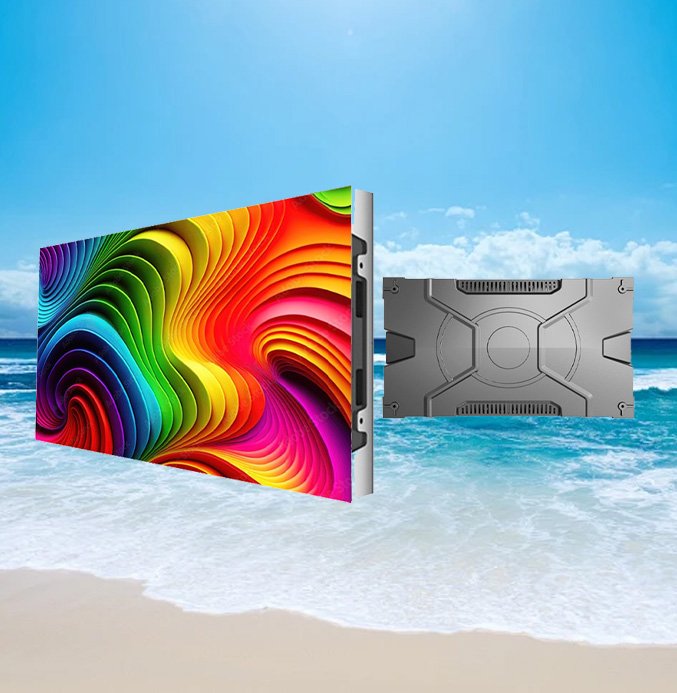
The viewing experience is always changing with technology. Resolutions bring unique aspects to viewer satisfaction. Three resolutions are taking the world by storm: Full High Definition (FHD), Quad High Definition (QHD), and Ultra High Definition (UHD). All three have their characteristics that target unique purposes. This guide will give you an accurate picture of FHD vs. QHD vs. UHD.
What is FHD?
FHD is a resolution that has been around for a while. Many people understand this as 1080p. Full High Definition has a resolution of 1920 x 1080 pixels, totaling 2,073,600 pixels, and an aspect ratio of 16:9.
FHD is common in monitors, televisions, and smartphone screens. Consequently, it gives the viewer a widescreen viewing experience alongside sharp and crisp images. It is also a much more affordable option of the three resolutions.
What is QHD?
Quad High Definition (QHD) represents 2560 x 1440 pixels, as standard as 2K or 1440p among many people. You enjoy more advanced features. Furthermore, it is four times the standard HD resolution (720p). It has an aspect ratio of 16:9 with a count of 3.686,400 pixels, providing the middle experience between FHD and UHD, enhancing performance and affordability.
When you do a QHD vs. FHD review, the QHD gives you 1.77x more pixels than the FHD resolution. With the QHD, the viewer enjoys sharper images. If you need to check the QHD in real-life applications, check gaming monitors and several high-end smartphones.
What is UHD?
After discussing FHD vs. QHD, it is time to explore UHD. The abbreviation is Ultra High Definition and refers to a 3840 x 2160 pixels resolution, which is joined to a 4K resolution since it provides about 4000 horizontal pixels.
You can still enjoy a 16:9 aspect ratio with this UHD resolution, and it has a count of 8,294,400 pixels. Demand for professional use, high-end monitors, gaming enthusiasts, and televisions is increasing.
For FHD vs UHD, there is a huge difference since you get fine details and sharper graphics, adding more life to your colors and images. When comparing QHD vs UHD, you realize that UHD provides finer information and photos to get more life, especially with larger displays.
FHD vs. QHD vs UHD Comparison 2024
After learning about the three resolutions, here comes the crucial section. Here is the FHD vs. QHD vs. UHD debate to understand the existing differences in these resolutions. Go through them one by one to get a clear picture.
Resolution
You already know that FHD resolution is 1920×1080 pixels while QHD has a resolution of 2560 x 1440 pixels. This UHD gives you the highest resolution, which is stated as 3840 x 2160 pixels. The debate on UHD vs. FHD will always see UHD win since it has a pixel count that is 4 times that of FHD. Consequently, you get sharper and more detailed visual content with UHD.
Cost Advancements
In technology and more innovations come at a cost. The FHD vs. QHD comparison sets QHD as a more costly resolution with a slight price variation from the FHD. For FHD vs. UHD comparison, UHD displays are very expensive. Higher resolutions will force you, as the viewer, to dig deeper into your pockets. Thus, FHD devices are a cheaper option. The decision on which option to go for depends on your budget, which limits the visual content quality.
Hardware Requirements
Hardware considerations come in handy when addressing the FHD vs. QHD vs. UHD discussion. UHD has the highest number of pixels, followed by QHD and FHD trails with the least number of pixels.
For a huge number of pixels, you need more hardware resources to meet the display’s demands. Higher-resolution displays will require you to invest more in powerful hardware. This advanced resolution also requires more bandwidth when streaming and storing large files.
Content Availability
QHD vs. 4K? Most current content is still in FHD or a lower resolution. However, technological advancements have made more than 4K content available. Most platforms are welcoming the new era of UHD.
Future-Proofing
FHD devices are in less demand than other options. FHD is less demanding in terms of future proof. UHD supports higher-resolution content, becoming a desire for all as technology changes.
Ideal Uses
In most cases, FHD suits regular home or office use. You can use them to achieve normal functions like document reading, web browsing, and watching the standard HD media content.
Screen Size
When using smaller screens, the difference is not easily noticeable. When using larger screens, you realize that extra pixels add a more advanced viewing experience.
The increase in pixel density reduces the visibility of individual pixels, giving out quality and sharp images. FHD displays of smaller sizes work well for daily tasks, and a more prominent UHD display best fits for professional usage.
Pixel Density
Most will advise you to go for higher options for this case of pixel density. It is incredibly impactful when the screens are minor. UHD contains four times the pixel count compared to FHD, giving out sharp and extra-detailed images.
4k resolution has twice the pixel density of 1440p, resulting in more advantages when dealing with visual content. The pixel density for FHD is lower than that for QHD and UHD. We term QHD mid-range, while the higher PD makes UHD lead.
Advantages of FHD Resolution
After analyzing the fundamental differences between the three resolutions, it is good to learn the pros of the FHD resolution. Understanding the advantages will help you make a well-informed decision.
Less Power Consumption
Since we know that FHD displays do not have complex hardware requirements, they won’t consume lots of power. Being less advanced makes the FHD options consume less power. In that effect, you consume less power, which saves you on costs.
Content Compatibility
FHD is compatible with several devices and accepts a wide range of content. So, you can use FHD across various platforms and enjoy seamless and smooth watching.
Cost-Effective
In the FHD vs. QHD vs UHD debate, the most affordable or budget-friendly resolution is the FHD. As a consumer, you will aim to balance visual quality and cost. Thus, FHD stands out in terms of affordability.
Advantages of UHD Resolution
UHD is the king of the other resolutions. UHD gives the best experience for your games and other visual media. It feels so realistic, giving life to videos and images. Suitable for larger screens like LCs and LEDs.
Sharper Images
Who doesn’t like sharper and quality images? That is where the different resolutions come in. With the presence of a high number of pixels, UHD can easily give you detailed and sharp visual content. Thus, you enjoy an amazing viewing experience that shows the depth and texture of the subject.
The entertainment industry will always use a 4K display when comparing UHD and QHD (QHD and 4K). The quality is top-notch, especially when watching movies and playing games.
Image Detail
For detailed and vibrant images or visual content, UHD will give you unmatched results. Your viewing experience will be unique since you get a resolution four times higher than the FHD. Such aspects deliver precise and sharper images. Thus, larger screens or sitting nearer the display will give you a quality image experience.
Technical Applications
With growing changes in technology, the UHD display adapts well to current tech standards. Additionally, UHD allows easy compatibility with most new media. The higher resolution allows users to run multiple applications simultaneously within the same display. Consequently, such a step will enhance productivity and efficiency.
Advantages of QHD Resolution
Which is better in the debate of QHD vs FHD? When we consider image quality, QHD has improved significantly. More advanced features contribute to a sharper and super-exciting viewing experience. The resolution is a good choice for work and play. You may need extra investment in a beefier graphics card to process the added pixels.
Multitasking
The consumer can use the QHD resolution to engage multiple apps within a single display. You will enjoy extra comfort due to improved resolution. Such a step enhances productivity.
Better Quality than FHD
QHD has more pixels, making it the best option for offering finer details and sharper images. Professional work and gaming are some of the essential usages.
Cost Effective
QHD is an adaptive display resolution, and consumers accept its features. If you are on a budget, consider QHD as the best alternative. It is a great upgrade to the FHD TV.
Conclusion
Technology will always play a big role in the consumer viewing experience. The discussion on QHD vs. FHD vs. UHD is crucial in determining your display of preference. FHD is best suited when you don’t settle on particular requirements. On a budget, QHD is an excellent upgrade for enjoying better quality.
UHD is an expensive but elite resolution for professionals who want clarity, quality, and a good viewing experience. The appropriate resolution will depend on your specific requirements and preferences. Take time to understand the resolutions to make your viewing experience the best.
Boost FHD vs. QHD vs. UHD Use with LEDSINO Now!
The FHD vs. QHD vs. UHD debate is challenging. You must understand the resolutions and know the different applications using the displays. FHD is typical in applications like video/photo editing, streaming high-quality videos, and gaming.
QHD supports more professional tasks requiring high-detail images, such as high-end gaming, medical imaging, and CAM/CAD design. Finally, the UHD resolution applies to applications requiring highly detailed and precise images, like high-end gaming, graphic design, and video editing. LEDSINO will help you get excellent performance!

Enter the digital world with our advanced display technologies.





